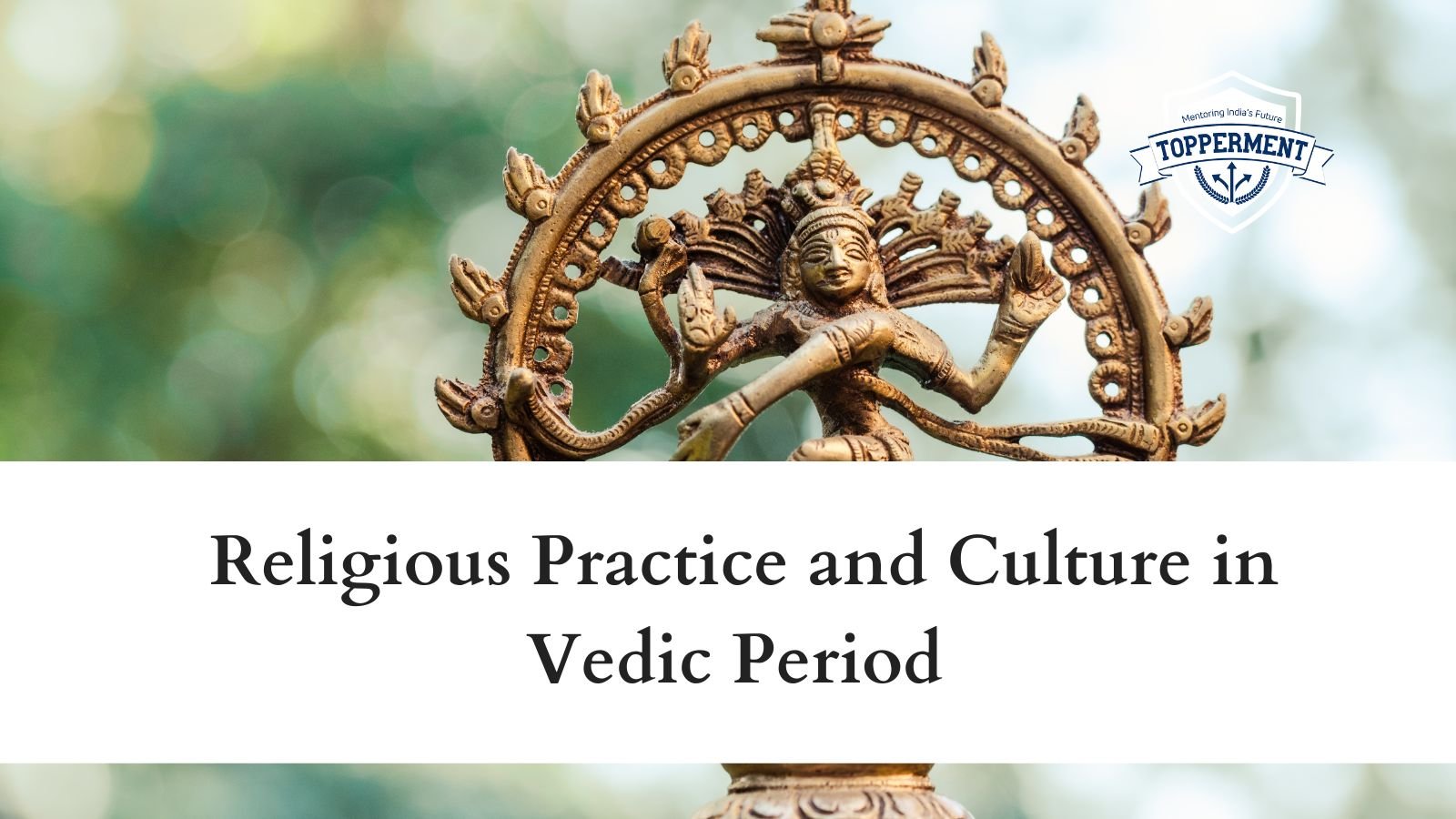Vedic religion is also called Vedism. It is the oldest stratum of religious activity in India for which there exist written materials. It was one of the major religions that shaped Hinduism.
The Early Vedic Period or the Rig Vedic period began in 1500BC and continued up to 1000BC. The religion during this period was quite simple, and the people worshipped natural forces like the sky, sun, moon, thunder, wind, dawn, and air. The Vedic people composed hymns and offered animal sacrifices. The gods and goddesses were divided into three categories that are terrestrial, aerial, and celestial.
· Terrestrial gods are Agni, Soma, Brihaspati, and Prithvi.
· Aerial gods are Rudra, Vayu, Indra, Maruts, and Prajanya
· Celestial gods are Varuna, Surya, Dyayus, Savitri, Mitra, Asvin, Vishnu, Usha, and Pusha.
During the rig Vedic period people believed in the theory of the soul departing to the Pitralok. Even though they worshipped many gods and goddesses, they still believed in one god with different names. The early Vedic people followed a simple worship mode and worshipped only natural forces.
The religion primarily consisted of obligations, prayers, and hymns. They were used to praise the god, and they also performed certain ritual sacrifices known as yajnas to please the gods. Apart from these rituals, they also performed animal sacrifices and offered milk, fruits, ghee, and grains by throwing them into the fire as a part of yajnas.
The early Vedic period didn’t build any temples or shrines, they didn’t worship any idols or images of gods. People used to consume milk, grains, fruits, and vegetables. Soma and Sura were popular drinks in Vedic society. Dancing, dramas, chariot racing, and gambling were popular pastimes of Vedic civilization. Vedic societies were intelligent people, and they worshipped gods and goddesses by following Vedic texts that fixed social boundaries, roles, status, and ritual purity. They used to lead simple lives, and they brought distinctive religious traditions, practices, and beliefs that were closely related to Hinduism.
Also Read
- The Relationship Between Rocks and Landforms | UPSC Geography
- Role of Constitutional and Extra-Constitutional Bodies in Law Making | UPSC Polity
Follow Us For More Content On:
https://www.instagram.com/topperment/
Tag:Cultures, Goddesses, Gods, History, IAS, IFS, India, IPS, IRS, Natural Forces, Practices, UPSC, vedic period, Vedic Texts


